As the gentle sun rises among the rolling hills, it awakens the two craftswomen friends of the villages of Pano and Kalo Lefkara with its warm rays. In the blink of an eye, they grab colorful threads, needles, and hoops, conjuring up new plots to embroider intricate patterns. It is here that the unique embroidery in the Lefkara village has gained worldwide acclaim.
The village life of these skilled craftswomen unfolds at a leisurely pace. They embroider their beautiful patterns in stone houses with red-tiled roofs at an elevation of 650 meters above sea level. The name Lefkara combines two words, “lefka” and “ori,” translating to “white mountains” (from the white limestone that characterizes the area).
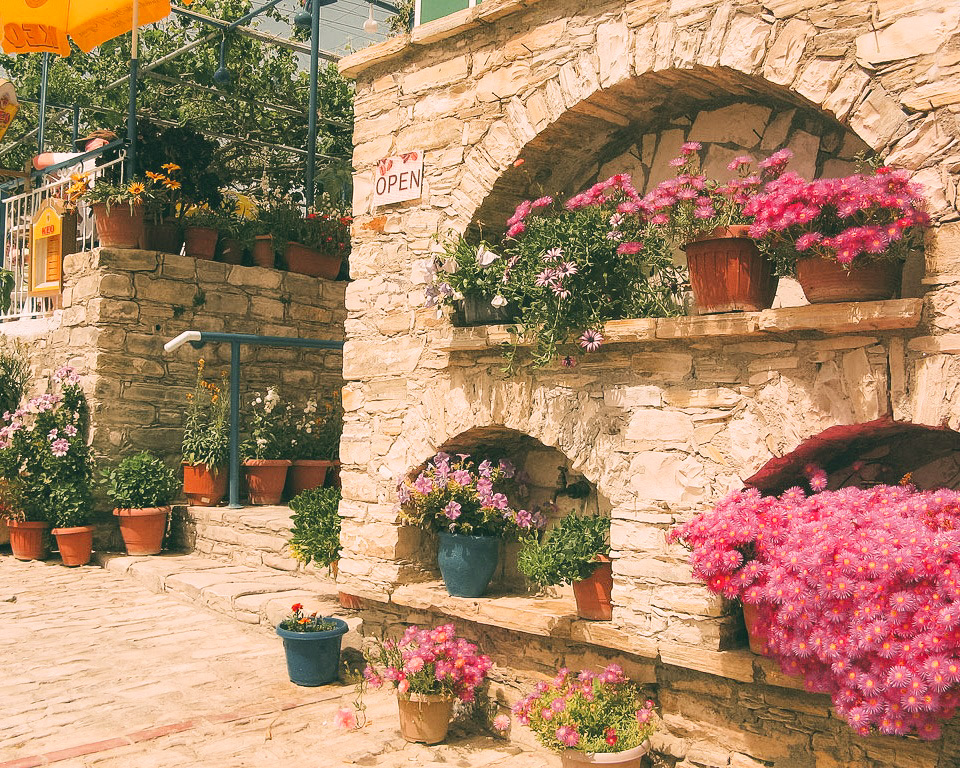
Craftswomen from all around gather here to draw new ideas and inspiration. The beauty that has been celebrated for centuries in the art of hand embroidery lures them irresistibly.
The original style of “Lefkaritika,” used by the craftswomen, derives its name from the village. This style has become so popular that it is listed as a UNESCO World Heritage. People marvel at the beauty, wondering how such intricate embroidery is possible.
Village residents share with curious tourists that their ancient traditions date back to the Venetian period when nobility visited during the summer. Wealthy Venetian ladies spent their time engaged in crafts, teaching the local girls in the process.
One of the things I enjoy most about exploring new places is discovering hidden gems. Take the Kakopetria village, for example; it is equally deserving of admiration as Lefkara.
Legend of Leonardo da Vinci – Embroidery in the Lefkara Village.
The village residents carefully preserve the legend of the Duomo Cathedral. It is said that in 1481, the great Leonardo da Vinci himself visited Lefkara, purchasing a cover for the altar in the Duomo Cathedral in Milan. The artist chose a cover with a “zigzag” pattern, later known as the Leonardo pattern. The village captivated the artist. Such beautiful and graceful creations!
Centuries have passed, yet people still remember this ancient tale. In 1981, in memory of the great artist, the Cypriot government issued a collection of stamps featuring the altar cover with the “zigzag” pattern and the Milan Cathedral. The residents of Lefkara decided to revive this legendary tradition. On the 600th anniversary of the Milan Cathedral on October 19, 1986, Christakis Constantinou – the village leader at the time – and Michalis Rousis – a designer specializing in embroidery – traveled to Italy and presented the cathedral with a new altar cover, even more magnificent than the original.
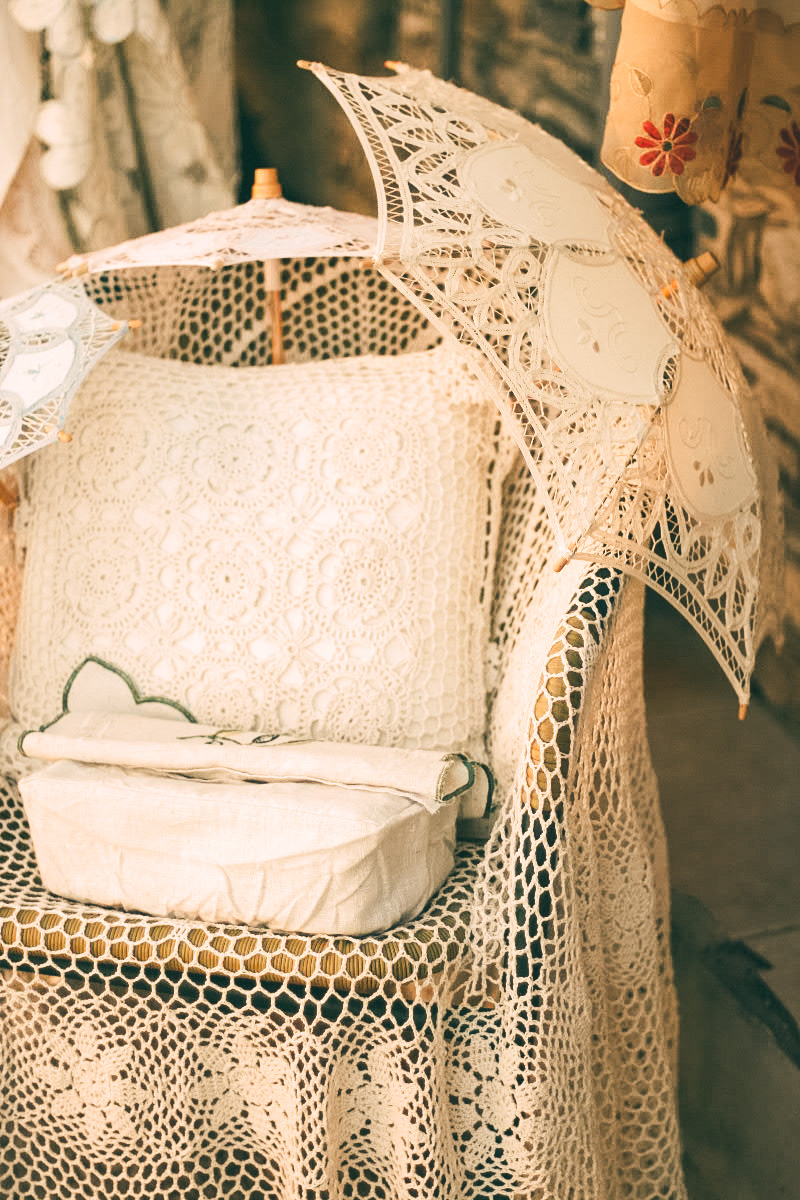
The best craftswomen spent seven months embroidering it. Michalis created a special design for the cover with the Leonardo pattern, using simple tools like a faceted glass, a pencil with a ribbon, and cardboard rings.
Michalis Rousis’ Family Workshop.
In the workshop called EXCLUSIVE ART SHOP, just a few steps from the main square and the school of Lefkara, you can meet Michalis. He supplies all the necessary materials for his craftswomen – threads, linen fabrics. About 30 women collaborate with him and his hardworking family. To see the craftswomen at work, you can visit their family workshop. They will explain the embroidery process and show you the wooden cushion wrapped in woolen fabric used for embroidery, pins to support the embroidery on the cushion, scissors, a tape measure, a delicate needle, and a thimble.
Passionate about Embroidery in the Lefkara Village.
The women of Lefkara are so passionate about embroidery that they spend entire days creating marvelous patterns, passing on their knowledge to their daughters. Enthusiastic young girls, like busy bees, hover over their creations, inventing new designs, demonstrating their talent. Each embroidery is unique, and each sorceress creates distinctive patterns with delicate fingers inspired by nature.
Nimble stitches, like little steps, move on the fabric, and on it, the radiant sun unfolds, grape clusters ripen, fragrant apples fill, almond blossoms, chamomiles, daisies bloom, and rivers flow. You unintentionally catch the scent of sunflowers, forget-me-nots; on the embroideries, lazy snails crawl, and colorful butterflies flutter briskly, while hardworking bees circle above honeycombs. In the embroideries, cold carved snowflakes fly and do not melt. The names of the embroideries are straightforward and related to everyday objects and nature: “lantern,” “windmill.” Improvising, the craftswomen maintain a unified style, each creating her own pattern reflecting her individuality. Embroidery is a meticulous manual craft, but the result is delicate and sensitive!
Features of Lefkaritika – Embroidery in the Lefkara Village.
Here are some key nuances of Lefkara embroidery:
 All embroidery is done only on linen fabrics.
All embroidery is done only on linen fabrics.
 Thread color is limited to natural shades: white, beige, and dark, without bright hues.
Thread color is limited to natural shades: white, beige, and dark, without bright hues.
 Stitching is done with a single thread, No. 8.
Stitching is done with a single thread, No. 8.
 Precise counting of threads on the fabric is crucial.
Precise counting of threads on the fabric is crucial.
 Often, both sides of the fabric look the same.
Often, both sides of the fabric look the same.
 Many patterns consist of geometric shapes.
Many patterns consist of geometric shapes.
 The embroidery often ends with a looped edge.
The embroidery often ends with a looped edge.
How did the Lefkara embroidery start.
It all began with another embroidery called asproploumia. This ancient embroidery features white ornaments on a dense base using cotton threads. Such embroidery is reminiscent of ancient East Mediterranean embroidery. Comparing lefkaritika and asproploumia, it can be confidently said that lefkaritika is much richer, with more intricate stitches and patterns reminiscent of the embroidery of ancient Italian masters. Nowadays, craftswomen import cotton threads from France and linen from Ireland.
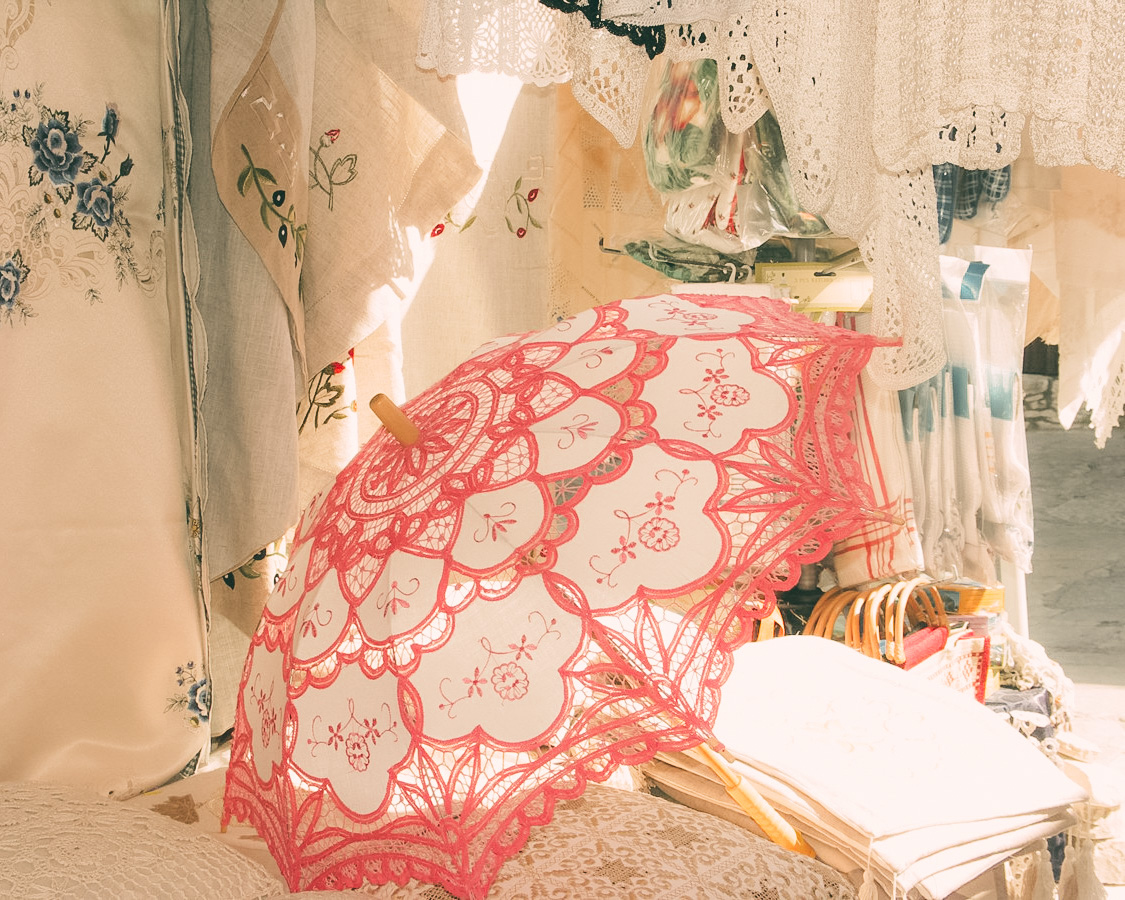
What is Lefkara lace used for?
Since ancient times, it has been used to make towels, napkins, curtains, and bed linen. All of these became part of a girl’s dowry. Initially, girls embroidered for themselves, their families, and their homes. Only later did the products start reaching other countries. Carrying filled bags, the craftswomen’s husbands traveled and sold embroideries. Upon returning, their wallets were filled with money, and they realized that Lefkara embroidery could become their main source of income.
In the 20th century, Lefkara embroidery reached Europe, Turkey, Egypt, and even Australia and America. Other cities in Cyprus, such as Komos, Kato Dris, Ora, and Athinu, also joined in, with craftsmen engaging in embroidery and trade with other countries.
Who else creates beauty in the village of Lefkara?
It’s not only women who work passionately in Lefkara. While diligent wives are engaged in embroidery, their husbands create silverware. The works of blacksmith-jewelers may not be as legendary as Lefkaritika, but they are equally beautiful. The filigree technique, resembling silver lace, is particularly exquisite.
What else can you see besides embroidery in the Lefkara Village?
Once you’ve bought wonderful gifts for your loved ones and observed craftswomen at work, take a leisurely stroll around the city. After all, Lefkara itself is a living museum and one of the most authentic places in Cyprus. Many colorful houses are exhibits of the museum, with one of these houses being the museum itself. A 19th-century mansion, the Museum of Folk Arts, showcases sofas, huge mirrors carved from wood, antique beds, but the museum’s pride is its large collection of ancient Lefkara embroideries. The museum’s address is G. Papandreou str., Pano Lefkara village.
All houses in the village are made of stone, and as you wander through the streets, you’ll notice many arches and sloping roofs with red tiles. Paved narrow streets, known as “sokakya,” are designed to protect from the sun and wind. Two-story houses with shops on the ground floor, long balconies facing the street, adorned with colored plaster, have survived since British rule. The streets are so narrow that when they were planned, they were designed to accommodate animals laden with bundles of hornbeam wood.
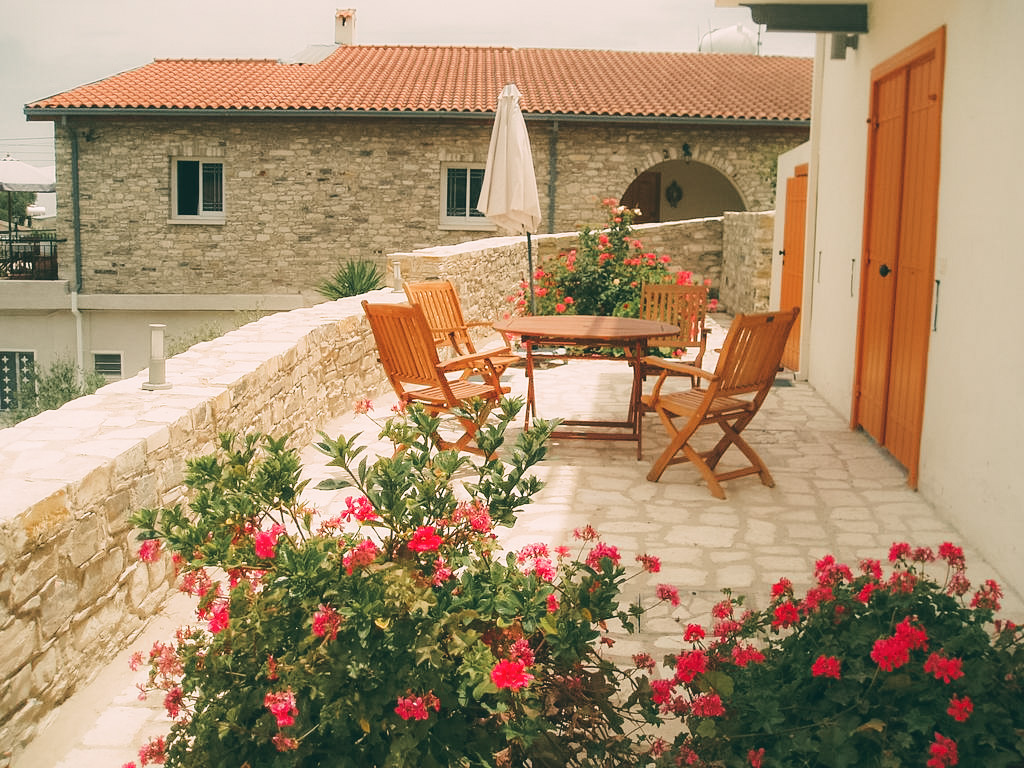
Wandering along the narrow paths, you’ll often come across images of lions, eagles, and other figurines. Every corner here is connected to Christianity. In many courtyards of the village, secluded antique chapels stand, where services are held to this day.
Stone houses with fruit trees line the streets. In village taverns, delicious homemade lunches are prepared. Through conversations with locals, you can learn about beekeeping, olive cultivation, pear picking, processing of walnuts, and, of course, winemaking.
After lunch, there are plenty of activities: learn Greek words like “kalimera” and “kalispera,” ask the hostess to teach you how to bake local tahinopita buns, make kleftiko or moussaka yourself, go on a picnic, explore nearby bike routes, or simply wander around the village on foot.
Just look at how much locals love their corner. Every house has live flowers, elegant mansards, and wooden balconies. The streets are clean and well-maintained. It seems that in such places, people forget about all their worries.
If you have a few free days and are looking for locations with a touch of culture, here are my suggestions to create the perfect route in Cyprus.
What delicacy to try in Lefkara.
The village is also famous for sweets called “Lefkara loukoum.” In local taverns and homes (especially on Sundays), they prepare Lefkara tavas (cubes of lamb or goat meat baked in a clay pot) according to a special recipe, which they will gladly share with you. In many windows of Lefkara, you can also find fragrant glyko jam for sale.
How to get to Lefkara from Larnaca.
After leaving Larnaca, head west on the A1 highway. Drive 49 kilometers, and then from Limassol, head east on the A5 highway. You’ll need to drive about 60 more kilometers.

I highly recommend traveling around Cyprus by your own transportation, as it’s one of those regions where it’s easiest to get around by car! Moreover, many attractions are quite far from each other. Don’t have your own car? Why not rent one for a day or two? Check prices and availability of cars here.
Check Aviasales to find the cheapest flights to Cyprus if you’re planning a trip from another country.
Best hotels in Lefkara.
Nestled in the heart of Cyprus, the picturesque village of Lefkara is not only renowned for its rich cultural heritage and traditional handicrafts but also for offering an enchanting escape for those seeking a luxurious and tranquil stay.
The Lefkara Hotel & Spa – Location: Main Square, Lefkara.
Immerse yourself in luxury at The Lefkara Hotel & Spa, an elegant retreat located at the heart of the village. This boutique hotel seamlessly combines modern amenities with traditional Cypriot charm. Guests can indulge in rejuvenating spa treatments, savor delectable local cuisine at the on-site restaurant, and enjoy breathtaking views of the surrounding landscapes from the rooftop terrace.
Lefkara Resort & Villas – Location: Larnaca-Nicosia Road, Lefkara.
For those seeking a more private and spacious accommodation, Lefkara Resort & Villas offers a collection of meticulously designed villas surrounded by lush gardens. Each villa is equipped with luxurious amenities, including a private pool, creating an oasis of tranquility. The resort’s dedication to personalized service ensures a memorable and relaxing stay for every guest.
Lefkara View Hotel – Location: Pedoulas Street, Lefkara.
Perched on a hillside, Lefkara View Hotel lives up to its name, providing guests with breathtaking panoramic views of the village and the surrounding countryside. The hotel’s stylish rooms and suites are tastefully decorated, and the outdoor pool area offers a serene space to unwind. With its warm hospitality and attention to detail, Lefkara View Hotel promises an intimate and peaceful getaway.
Whether you’re drawn to the rich history of Lefkara or simply seeking a peaceful escape, these hotels offer a perfect blend of luxury and authenticity, ensuring an unforgettable experience in this idyllic Cypriot village.
If you’re looking for something new to expand your exploration of Cyprus, then head to the Turkish side of the island for a history tour. The city of Kyrenia and Bellapais Abbey will surprise you.
If you liked this post “Unique Embroidery in the Lefkara Village in Kyprus” then please follow me on Instagram, so you don’t miss any updates.
I am available for commercial work such as personal photography, brand photography, product photography and more. If you would like to work with me, feel free to email me – hello@foxgleann.com.
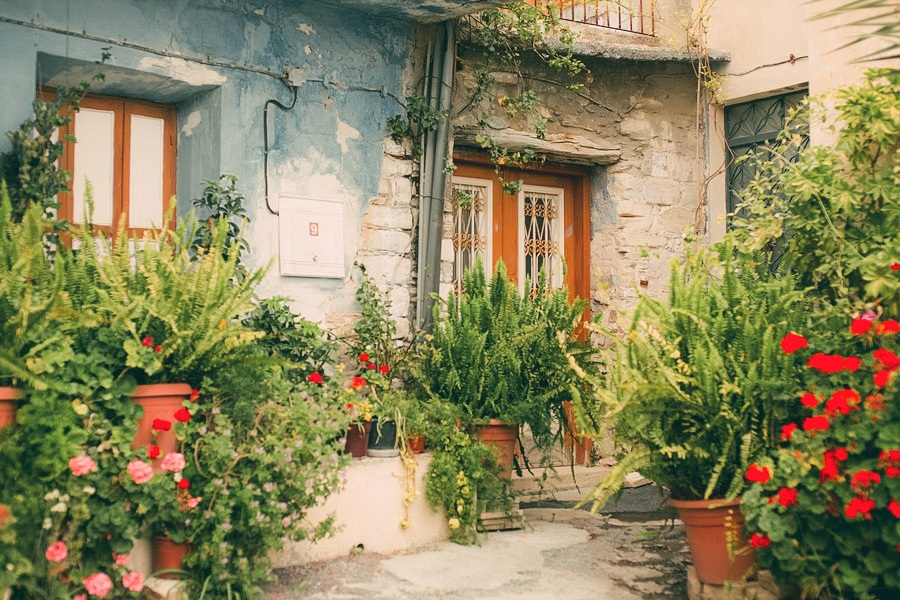



2 Comments
What a lovely detailed description of the village and its art. A really interesting post full of enthusiasm and respect for the local community. My curiosity was piqued when I saw the embroidery part of the post because my first self-published children’s book is all about a planet of fabric beings who build their world using handicrafts like crochet, knitting, weaving, crossstitch and patchwork. Reading about the beautiful embroidery created by the ladies of this village was fascinating.
I liked your ability to describe precisely all you’ve seen. Thank you for sharing. Best wishes, Tony
Thank you very much for your attention to my work! I am very happy that my post resonated in your heart!